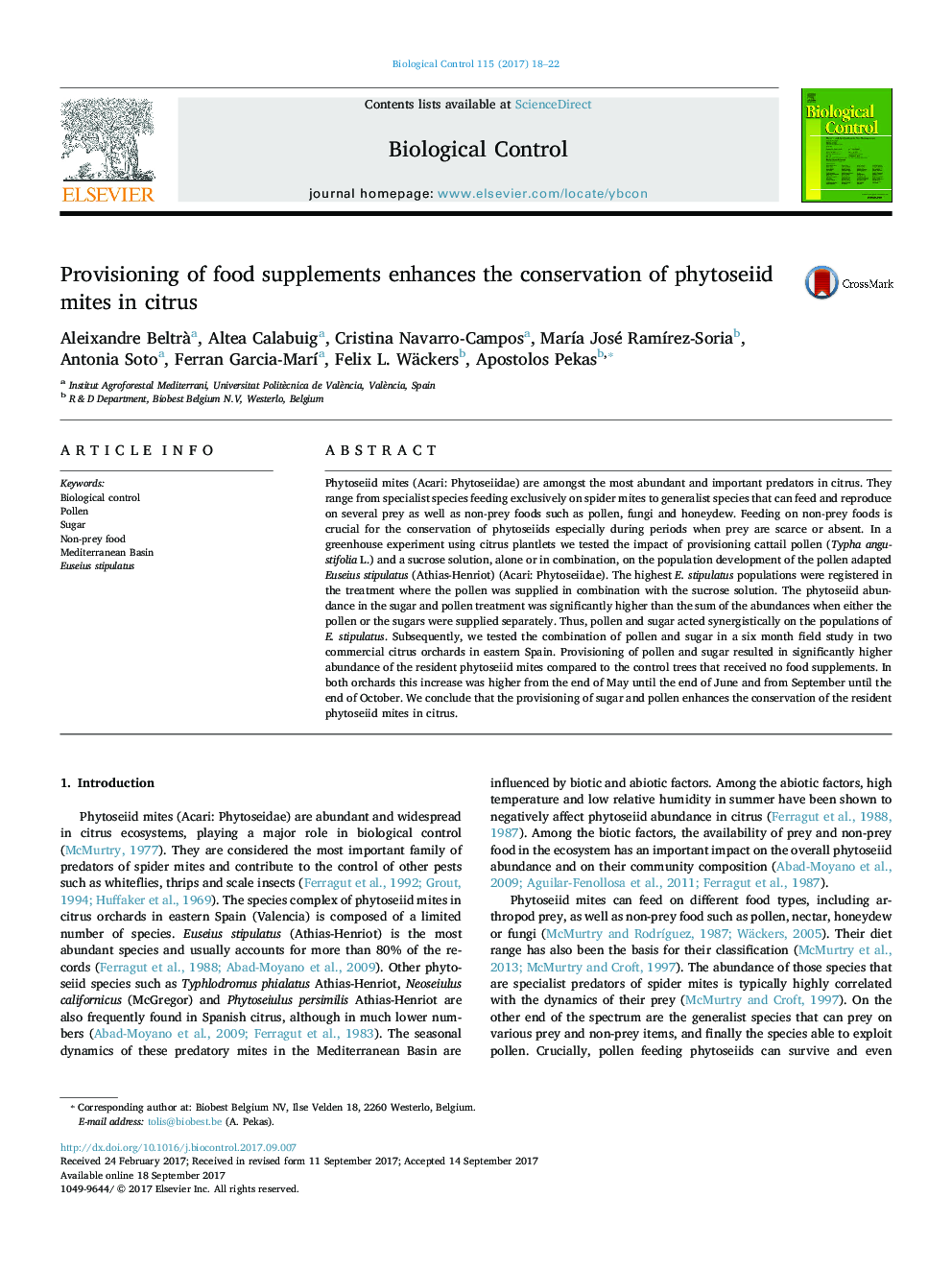| Article ID | Journal | Published Year | Pages | File Type |
|---|---|---|---|---|
| 5760690 | Biological Control | 2017 | 5 Pages |
Abstract
Phytoseiid mites (Acari: Phytoseiidae) are amongst the most abundant and important predators in citrus. They range from specialist species feeding exclusively on spider mites to generalist species that can feed and reproduce on several prey as well as non-prey foods such as pollen, fungi and honeydew. Feeding on non-prey foods is crucial for the conservation of phytoseiids especially during periods when prey are scarce or absent. In a greenhouse experiment using citrus plantlets we tested the impact of provisioning cattail pollen (Typha angustifolia L.) and a sucrose solution, alone or in combination, on the population development of the pollen adapted Euseius stipulatus (Athias-Henriot) (Acari: Phytoseiidae). The highest E. stipulatus populations were registered in the treatment where the pollen was supplied in combination with the sucrose solution. The phytoseiid abundance in the sugar and pollen treatment was significantly higher than the sum of the abundances when either the pollen or the sugars were supplied separately. Thus, pollen and sugar acted synergistically on the populations of E. stipulatus. Subsequently, we tested the combination of pollen and sugar in a six month field study in two commercial citrus orchards in eastern Spain. Provisioning of pollen and sugar resulted in significantly higher abundance of the resident phytoseiid mites compared to the control trees that received no food supplements. In both orchards this increase was higher from the end of May until the end of June and from September until the end of October. We conclude that the provisioning of sugar and pollen enhances the conservation of the resident phytoseiid mites in citrus.
Related Topics
Life Sciences
Agricultural and Biological Sciences
Agronomy and Crop Science
Authors
Aleixandre Beltrà , Altea Calabuig, Cristina Navarro-Campos, MarÃa José RamÃrez-Soria, Antonia Soto, Ferran Garcia-MarÃ, Felix L. Wäckers, Apostolos Pekas,
